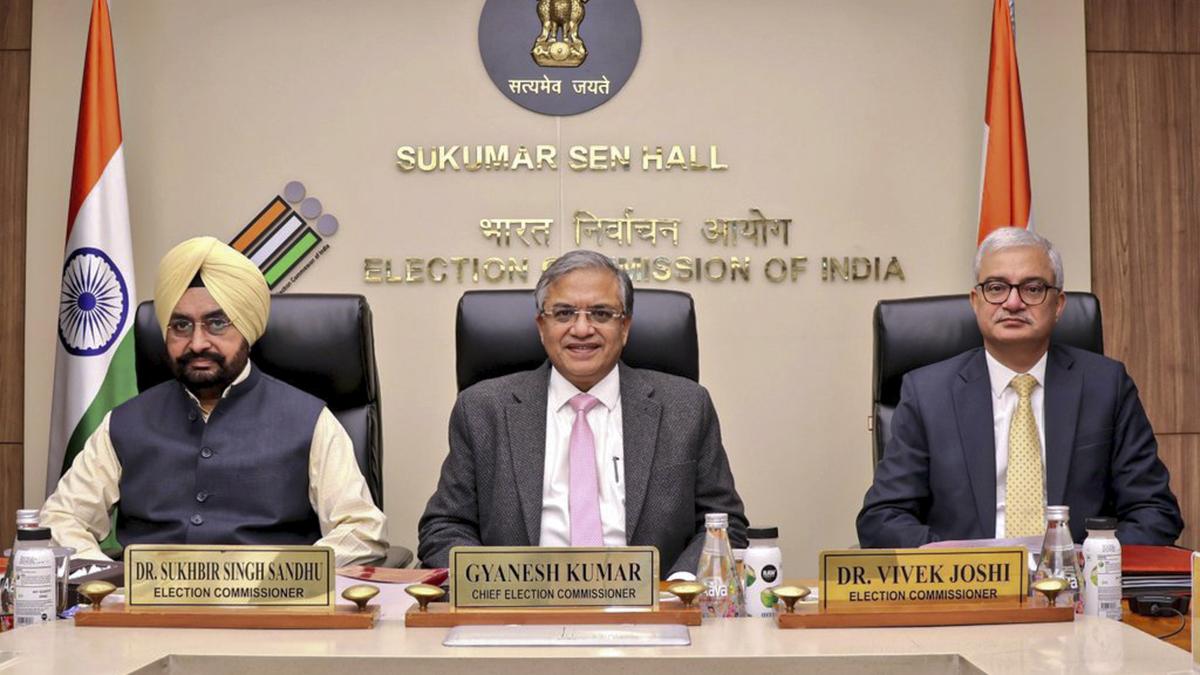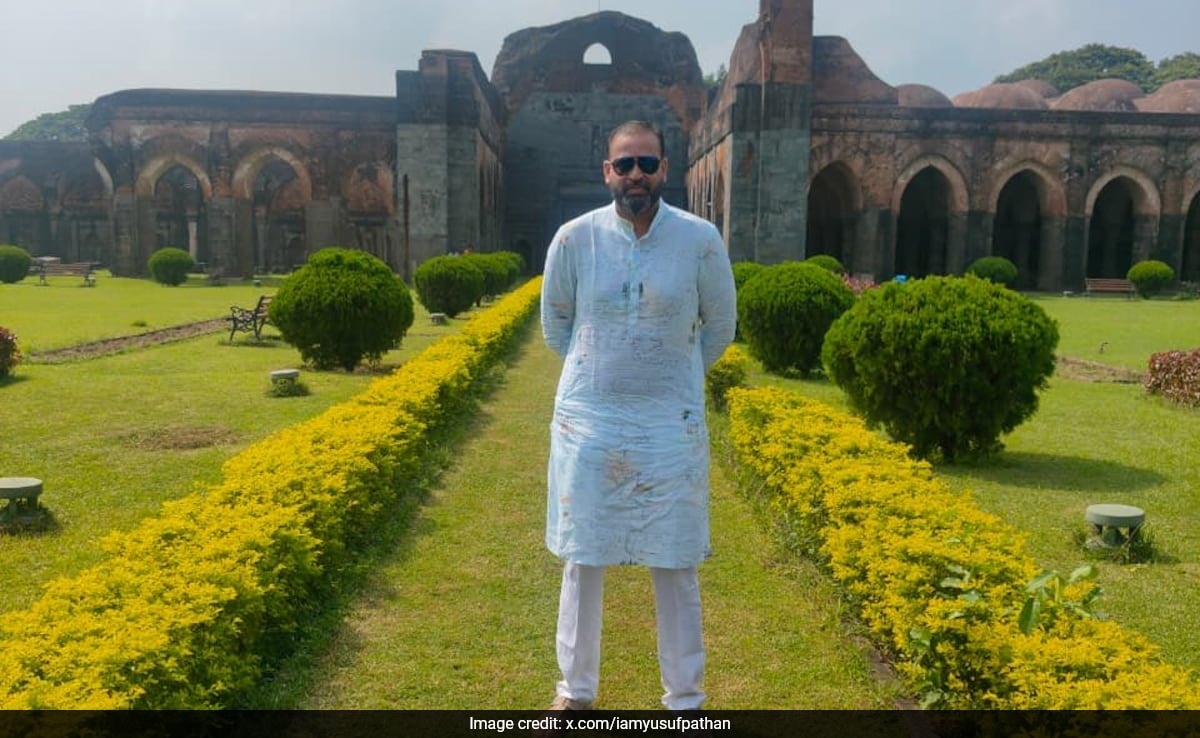For seven years tiger Rudra, his orange coat blazing through the emerald wilderness, ruled the forest terrains of the Wayanad Wildlife Sanctuary unchallenged.
But a fierce territorial duel with another big cat for space and survival cost him all his canine teeth, with which he incised food and fought his rivals.

Ostriches that have been brought to the Zululand Zone of Thrissur Zoological Park. | Photo Credit: NAJEEB KK
The loss of canines took away his bite force and deprived him of his ability to hunt in the wild. Weakened by hunger, Rudra began to wander beyond the forest’s edge and started looking for cattle and other easy prey in human settlements of Surabhikkavala, Thanni Theruvu, and Vadanakkavala, near Pulpally, in Wayanad district.
The presence of the big cat in human habitations triggered fear and people demanded that the animal be captured and removed from the area.

A leopard at Thrissur Zoological Park. | Photo Credit: NAJEEB KK
Eventually, Rudra was trapped in a cage set by forest officials at Vadanakkavala in February 2024, thus ending his solitary forage.
Setting the tiger free again was not an option for the wildlife managers, as they feared that the animal may not survive in the wild and could return to habitations looking for prey. No one could think of the possibility of it coming back to human settlements, as there also existed the possibility of it attacking humans.
It was eventually decided that the animal be shifted to Thrissur Zoological Park at Puthur, one of Asia’s largest zoological parks. The proposal was widely welcomed as it offered the animal the option of roaming around freely in a near-nature space rather than being confined to a cramped cage.

A view of Thrissur Zoological Park, Puthur. | Photo Credit: NAJEEB KK
“The park is not a space to lock up animals but to give them a dignified, near-natural life and help people understand their place in the ecosystem,” says Revenue Minister K. Rajan, explaining the very idea of the park.
On October 28, Chief Minister Pinarayi Vijayan will inaugurate the park, marking the beginning of a significant phase in Kerala’s wildlife care, conservation, and education programmes.
For nearly three decades, the idea of a larger zoo in Thrissur had been doing the rounds. The old zoo, spread over 13.5 acres in the city centre and has been established for over a century, was crowded and outdated, with more than 450 animals confined to the enclosures.

A panoramic view of Thrissur Zoological Park, Puthur. | Photo Credit: NAJEEB KK
The turning point came in 2012, when Australian zoo architect Jon Coe, who had played a key role in setting up over 85 zoological projects worldwide, visited the site at Puthur.
“Jon found the terrain and the ecosystem perfect for a new-generation zoo,” recalls M. Peethambaran, secretary of Friends of Zoo, an organisation that had been campaigning for the project. “Our dream was to give animals space to live, not just survive.”
The idea of the park gained traction when the State government included it on the list of projects to be funded by the Kerala Infrastructure Investment Fund Board.

Chimbu, the wild gaur at the Puthur zoo | Photo Credit: NAJEEB KK
“A dream that began 30 years ago is finally taking shape,” says Rajan, who represents the Ollur Assembly constituency of Thrissur in the State Assembly. “This isn’t just another zoo — it’s a statement of how Kerala treats its wildlife. We have invested over ₹370 crore to make this a world-class conservation space,” he says.
A sanctuary re-imagined
Designed by Jon, the park redefines the concept of a zoo. It’s not a spectacle of confinement, but a sanctuary of coexistence. Built as a zoo without bars, the park mirrors wildlife habitats across India and beyond, giving both animals and visitors an experience closer to the wilderness than to an urban enclosure, says the park managers.
“My principal responsibility was to see that the facility came up as conceived by Jon,” says K.J. Varghese, special officer of the park.
The park is divided into nine zones and has a dedicated conservation area, each echoing a distinct ecological region. From the dry, sun-baked Zululand Zone to the mist-laden Shola Grassland Zone, every space tells a story of adaptation and coexistence.

Entrance to Thrissur Zoological Park. | Photo Credit: NAJEEB KK
“Each zone here is a miniature version of its parent ecosystem. We recreated the landscapes, soil texture, microclimate, and even the vegetation has been brought in,” says Varghese.
Nine worlds, one wilderness
In the Kanha Zone, for instance, visitors will watch India’s big cats — tiger, leopard, and Asiatic lion — roam through stretches of sal and teak forest. Elevated decks and viewing tunnels allow people to observe the animals in motion within natural landscapes.
“The idea is to let people see wildlife in action— climbing, stalking, playing,” says B.N. Nagaraj, Director of the park. “It’s not just about display. It’s about animal behaviour, ecology, and emotions,” he says.
A slice of Africa
Walk a little further, and the terrain changes dramatically. Red soil replaces green, the air feels drier, and the architecture shifts to thatched, conical huts — welcome to the Zululand Zone.
In this zone, everything, from the terrain to the buildings, follows the spirit of the African Savannah. One can see giraffes, zebras, elands, ostriches, and hippos. Visitors can stroll across boardwalks above the hippo swamps, where claybanks mimic the eroded edges of African rivers. For a moment, Thrissur feels a world away.
Whisper of the sholas

A view of Thrissur Zoological Park. | Photo Credit: NAJEEB KK
At the Shola Grassland Zone, the air cools and the landscape turns emerald. Nilgiri tahrs, raptors, and grassland birds glide through the open space, surrounded by native plants that replicate the Western Ghats ecosystem.
“The shola forests are fragile, unique, and stunning. We’ve recreated the microclimate — mist, moss, and meadow — so that even the birds feel at home,” says Varghese.
Nearby, a Bear Zone shelters sloth bears and Himalayan black bears in shaded woods, while the Grassland Zone hosts wild dogs — dhole, jackal, and hyena — in large, open plains that encourage natural pack behaviour.
The park features hologram tunnels, where visitors can watch 3D projections of extinct or rare animals. Visitors walk through immersive environments where they can see holographic animals, such as in tunnels, where they appear to fly around, or in fenced enclosures, where they seem to be alive.
These experiences allow guests to feel like they are visiting different locations and time periods. Hologram tunnels allow visitors to walk through spaces where animals fly around them and sky roofs show animals walking overhead. Another attraction is the Petting Zone, which allows children to interact safely with small and young animals, nurturing empathy and awareness.
“Our goal is to make learning irresistible,” say the curators. “When a child can see, touch, and understand an animal, they grow up wanting to protect it.”
A nocturnal house is getting ready to showcase owls and reptiles under soft light, while interpretive trails explain animal behaviour, forest ecology, and conservation challenges.
Conservation comes alive
Beyond the visitor trails, the park houses a conservation and research complex equipped for breeding endangered species, veterinary care, and wildlife rehabilitation. The zoo also plans to collaborate with universities and conservation agencies to study animal behaviour and ecosystem management.
Sustainability is built into every layer of the project. “We’ve planted thousands of trees — bamboo, palms, and forest species apart from the innumerable garden plants to build a self-sustaining ecosystem,” adds Varghese.
The water requirements of the park are met from the two rainwater ponds, two abandoned quarries that hold 645 million litres of water, and from the Manali river. Solar panels power the administrative units, and reed beds treat wastewater, and natural drainage channels ensure rainwater harvesting across the site.
Electric buses will take the visitors along the 6.5-km-long ring-shaped visitor path. Cafeterias, restrooms, and resting spaces have been put up. The Kerala State Road Transport Corporation will launch a double-decker bus, which will offer a tour linking the city with the park.
Visitors won’t just walk through the park — they’ll journey through biomes. Interpretation centres, interactive exhibits, and shaded walkways replace cluttered signages and cages. From the rustle of bamboo to the call of birds echoing across the lake, every sense is engaged.
Workers are busy engaged in giving the finishing touches to the project. Landscaping teams plant saplings. Engineers test electric buses. Curators finetune enclosures for their first residents.
“My responsibility was to make sure the project stayed true to Jon’s vision,” says Varghese. “Animal enrichment isn’t a one-time job. It has to evolve — the animals must stay curious and active.”
The government hopes that the park will have an annual footfall of 20 to 25 lakh by the fifth year. At present, only a third of the project area has been developed as a zoological park.
“The park will grow and evolve with time. It also proves that development and compassion can coexist,” Rajan says.
Although scheduled to open on October 28, entry to the park will be restricted for a few months. The animals shifted to the park should get adapted to the new habitat, say the park authorities.
The park combines education, research, and tourism to build awareness about wildlife and nature among visitors, according to the park managers.
Life will be a relaxed affair for Rudra as he can spend his days unchallenged and well-fed, something that suits the predator.

 1 day ago
5
1 day ago
5









 English (US) ·
English (US) ·